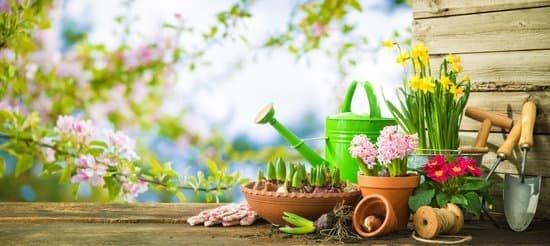Introduction
Winter gardening in Ohio can be both rewarding and challenging. The possibility of snow and freezing temperatures make the winter season one that should be approached with some caution, however there are a number of vegetables and other plants that are well suited for cultivation during the cold months. Many gardeners in Ohio take advantage of the cooler temperatures to grow tasty selections including kale, spinach, lettuce, carrots, artichokes, potatoes, cabbage and onions.
In addition to these traditional vegetables, winter gardeners are experimenting with new varieties that flourish in Ohio’s winter climate. Heirloom tomatoes such as different types of cherries are gaining popularity among home gardeners across the state due to the rich flavor they impart to dishes. Adding fragrant herbs to a planter or table top herb garden is another popular practice throughout the winter season that can provide delicious aromas and flavorful cooking ingredients when paired with other seasonal plants.
Using cloches—a bell-shaped cover—to protect tender seedlings is also an effective method used by many Ohioans to extend their growing season into the coldest months. Invented during the 19th century by French market gardeners, cloches have been updated for modern use using clear glass or plastic configurations and act as miniature greenhouses for small scale gardens. Most modern light-weight cloches are designed for quick removal which is important during intermittent spells of mild weather allowing busy active gardeners brief moments amidst their favorite hobby even in shortest days of the year!
Evaluating the Climate Conditions in Ohio
In Ohio, winter gardening presents a unique challenge due to the various climate conditions that affect the state. Winters in Ohio are typically cold and dry with temperatures ranging from 14-28 degrees Fahrenheit and an average snowfall of 28 inches. Heavy precipitation is more common during spring and summer months, with average precipitation reaching close to 34 inches. As the weather transitions closer towards summer, daytime temperatures can reach up to 85 degrees Fahrenheit accompanied by humidity levels over 75%. This muggy climate combined with frequent afternoon thunderstorms provide a difficult environment for many plants.
Ohio’s diverse agricultural regions require knowledge of individual climates in order to have a successful winter garden. For growers in the northernmost regions of the state, plants should be planted slightly earlier than usual as these areas may experience colder temperatures than other parts of Ohio. Additionally, since snowfall is common in northern Ohio, it will be important to protect garden beds against freeze-thaw cycles – using mulch or plastic sheeting can help minimize frozen soil damage and protect plants from coldness. In central and southern Ohio, the high humidity levels in summer are best addressed by sprinkling any plants on hot days to ensure they do not dry out, as this can increase their susceptibility to diseases like root rot or fungal infections. Crop rotation practices should also be employed for any seasonal vegetables so as not to deplete soil fertility. Furthermore, choosing varieties that are resistant to heat and humidity will help give them an advantage when dealing with warm air temperatures during blooming season. Finally, it is important to adjust harvesting times depending on season – shorter days mean vegetables must mature quicker while longer days may leave vegetables exposed too long and allow them time to develop disease or pests before harvest.
Choosing Varieties to Overcome Climate Challenges
Winter gardening in Ohio can be challenging due to the state’s unpredictable weather, however, choosing the right varieties of vegetables and plants can help overcome these climate challenges. Depending on where in Ohio you are located, selecting hardy winter crops that will thrive under cold temperatures such as kale and spinach will be a priority. When selecting plants for your garden it is also important to look out for cultivars that are labeled as “cold tolerant” or “overwintering” varieties to ensure they will have a better chance of survival during the winter months. These varieties may have characteristics that offer resistance to diseases and pests and require less maintenance than traditional varieties. Additionally, choosing taller varieties of plants can create natural windbreaks against strong winter winds. When planting, group beds of similar vegetation together so that if one does die from frost damage the others in its grouping may have a better chance of surviving. Lastly, it is best practice when dealing with extreme temperatures to cover each plant with an individual cloche or use a tunnel style covering for several beds at once to add another layer of protection during especially severe winters.
Successfully Planning Ahead for Winter Gardening
Winter gardening in Ohio can be a great way to grow vegetables and flowers through the cold months without having to worry about the harsh, unpredictable weather. Planning ahead is essential when it comes to winter gardening in Ohio. While some plants will survive cold temperatures better than others, it’s important to start your preparations early in autumn so that you have time to plan accordingly.
Before planting anything for your winter garden, you should clean up any existing garden beds and prepare them with fresh soil and compost. Next, you should select appropriate varieties of cold-hardy plants such as spinach, kale, onions, garlic and Brussels sprouts. Cover these with blankets or floating row covers in order to protect them from frost and snow. A layer of mulch or straw can also help the soil maintain its warmth during winter months and conserve moisture in the spring when rainfall is at its lowest points of the year. Additionally, it’s important to check for signs of pests damage regularly; using various pest control methods if needed.
Finally, once you’ve planted your winter garden and set up necessary layers of protection there are a few additional steps that can improve success rate even further: You should fertilize generously but judiciously; over-fertilizing can lead to lush foliage but low yields; use an organic fertilizer that contains little or no nitrogen as this promotes growth rather than fruit production; ensure that your garden has adequate drainage as ensuring good drainage helps maintain soil health during rainy winters; keep weeds out by regularly hoeing around your crops; thin seedlings if you have planted too closely together so young plants have adequate space to grow properly; water moderately throughout the growing season as overwatering can stress young plants; and practice crop rotation between years so similar crops aren’t grown in successive years helps control potential diseases or pest problems. All of these practices go a long way towards giving your winter crops the best chance of success!
Strategies for Notable Winter Gardening Success in Ohio
Gardening in Ohio during the winter months can be challenging due to the unpredictable weather. With temperatures fluctuating from below freezing to above 65 degrees Fahrenheit within the same day, proper planning is crucial for a successful winter garden in the Buckeye State. A few notable strategies for a successful winter garden include selecting cold-tolerant plants, preparing your soil for optimal growth, protecting tender plants from frigid winds and cold snaps, and providing adequate water during dry spells.
When creating your winter garden in Ohio, be sure to carefully select cold-tolerant plants that are native to the region. These will thrive best despite wide temperature swings experienced during an Ohio winter and may even survive severe snowfall or periods of drought. Your soil should also be amended accordingly with mulch or compost as needed to maximize fertility and promote healthy root growth throughout the season. Additionally, keeping a layer of mulch on top of your soil helps keep it at an even temperature which encourages slower freezing and faster warming when weather does begin to thaw. Finally, remember to protect fragile young plants by covering them or enclosing them in cages made from sticks and bird netting when necessary. Water is equally important; take care to provide adequate irrigation towards the end of fall before ground freezes over but not rainwater directly onto foliage as this may cause frost damage.
Necessary Maintenance for Your Winter Garden
Winter gardening in Ohio can be a challenge due to the harsh weather, but taking some extra precautions and completing necessary maintenance will help ensure that your winter garden thrives. To prepare for winter, harvest any remaining crops that you want to save for the season. Cut back dead plants and dispose of them properly so you can start off with a clean slate in the spring. Make sure your garden beds are free from debris that can suffocate plant roots or harbor pests. Applying a layer of mulch around plants helps insulate them from potential weather fluctuations and allows water and nutrients to penetrate the soil more easily. If your area is expected to receive heavy snowfall, build up berms or support structures around sensitive plants for protection against wind damage. Building covers such as cloches, hoops, teepees or tents are also beneficial for keeping out frosts, snow or excessive winds. If a freeze is expected during flowering season, cover vulnerable plants with blankets overnight to prevent any flower buds from being lost and forming ice crystals on leaves which could cause irreparable damage; good air circulation should be considered when doing this so mildew doesn’t form on delicate foliage. Deep-rooting perennials should always be left uncovered while annuals may benefit from additional insulation during subzero temperatures. Check irrigation lines regularly during inclement weather and turn off water sources when not in use to prevent freezing in exposed pipes. Finally check frozen ponds or puddles for insects that may have sunk near the surface and move them back into warmer portions of water once it thaws if needed. With these steps taken care of, you can enjoy beautiful flowers blossoming even through cold Ohio winters!
Essential Resources for a Productive Winter Garden
Ohio is a great state for winter gardening. It can be a cold and unforgiving climate, however, with long spells of freezing temperatures and the occasional snowstorm. Therefore, it is important to have the necessary resources available to make the most of your winter garden. The following are essential resources for a successful winter garden in Ohio:
1. Cold-Hardy Plants: It is important to select cold hardy plants that can handle Ohio’s harsh winter conditions. There are numerous options, such as Brussels sprouts, kale, cabbage, and root vegetables like potatoes and onions that are suitable for this climate.
2. Frost Blankets or Row Covers: Frost blankets or row covers provide extra protection for your plants during extreme cold weather and can also help keep them slightly warmer when nighttime temperatures dip below zero.
3. Mulch: Adding mulch is a beneficial way to protect your plants from frequent thaws and refreezes that often happen due to the unpredictable weather patterns in Ohio. Mulch helps keep soil temperatures closer to uniform throughout the season, thus providing an optimal environment for plant growth and development.
4. Pruning Tools: Winter provides the perfect opportunity to prune trees and shrubs since they go dormant during this time of year; but pruning gives you control over shape and size so you need good tools such as shears, lopers, saws, etc., to get the job done right.
5. Lighting & Heating Equipment: If you want your garden to thrive in the colder months then supplemental lighting & heating equipment may be required depending on the plant variety being grown; LED systems are very popular these days because they are cost-effective and energy-efficient while still providing enough light intensity for healthy growth and flower production during shorter days when daylight hours are reduced significantly. Similarly perhaps an electric heater/circulator might be needed if temperatures drop suddenly or linger too low for extended periods of time – this is especially true if growing in greenhouses where sustainable heat sources don’t always exist within natural seasonal settings like outside ground coverings or nearby water features for instance
Protecting Your Garden from Extremes and Pests
Having a successful winter garden in Ohio requires some extra care and attention. The soil will require nutrient-rich compost to maintain nutrients for the winter months, and it’s important to note that different plants have different needs when it comes to ground temperature, sun exposure, and fertilizer. Additionally, there are a few other concerns you should keep in mind during the winter season such as extreme temperatures, frost damage, dehydration, snow accumulation and garden pests.
It is important in Ohio to prepare your garden properly before the cold sets in so you can avoid any damage from the extremes of winter weather. Before the first frost arrives begin harvesting crops that mature early or quickly like lettuce or peas. For grazers such as deer and rabbits, surround your garden with either netting or repellents designed to deter their intrusions. Cold temperatures can also sometimes be just as damaging as animals such as frost or frost heaving caused by alternate freezing and thawing of soils – these can result in noticeable sunken areas around plants if severe enough. To help reduce this it may be beneficial to use straw mulches around plants prior to the onset of freezing temperatures. Covering plants with burlap sacks is also an option when there is little snowfall on top of them because white fabric does not allow light through – coverings also need to be securely tied in place so that they don’t blow away or fray away too much throughout cold days. Finally, pay close attention during warmer patches of weather above freezing – although helpful for producing food – warm days during the winter months may invite pests out of hibernation ready to snack on your hard work! It is important monitor closely during this times by removing those pests only found on above ground portions with physically handpicking them.
Harnessing Ohio’s Winter Wonders for a Beautiful Garden
Winter gardening in Ohio can create a picturesque landscape with its snowy fields and barren tree branches. With just a bit of planning and know-how, anyone can transform the dormant state of winter into a beautiful garden. Though some planning is needed, winter gardening doesn’t have to be a stressful endeavor. Here are some tips for making the most of winter gardening in Ohio:
• Prior to planting, pick out your hardy cold weather varieties that tend to flourish during the winter months. Varieties such as shrubs, trees, evergreens and conifers are often best suited for winter gardening given their ability to withstand cold temperatures.
• Once you’ve picked out your plant varieties and prepared your soil, thoughtfully considering where each species should go. Shrubs and evergreens can make great accent pieces within an existing landscape while providing additional foliage coverage when they are full grown.
• Add soil enhancers like mulch or compost which will not only provide nutrients for the soil but help keep moisture locked in during colder temperatures. This will also help protect the plants from strong winds common during the winter season.
• In order to get the most out of your garden design, think about adding dimension with pots or planters capable of holding larger types of plants or even flower baskets that hang from trellises or posts. This will further contribute to creating an interesting dynamic look with plenty of color throughout your garden space.
• Finally, get creative by adding some focal points like bird feeders or decorative sculptures to draw attention to certain areas throughout your space for added drama as well as serving functional purposes in offering food or shelter for various wildlife visitors year-round!
Preserving the Harvest to Enjoy All Winter Long
Winter gardening in Ohio can certainly be a challenge, with low temperatures and unpredictable weather. However, when done correctly, winter gardening can be a rewarding experience that yields a bounty of fresh fruits, veggies, herbs, and flowers that can be preserved to enjoy all winter long. Knowing what crops to plant based on Ohio’s climate conditions is the key to successful winter gardening. For example, there are several hearty species of kale and lettuce that thrive in cold weather, so planting those as early as possible will ensure an abundant harvest. For more tender plants like peppers or squash, gardeners should consider using row covers or frost cloths to provide adequate protection from icy winds or sudden frosts.
When it comes to harvesting for storage purposes in colder climates like Ohio, there are certain tips and tricks that help maximize shelf life. Tomatoes should be picked before the first frost and stored at room temperature until they reach their peak ripeness. Similarly, carrots should be able to sustain cold weather provided they are harvested before any severe chill sets in—however wrap them tightly in moisture-proof containers before placing them into the refrigerator for enhanced taste and longevity throughout the winter season. Once the vegetables have been harvested and prepared properly for storage, preserving techniques such as blanching, dehydrating, freezing, or pressure canning can be used to ensure maximum freshness even after months of storing. Remember it’s also great to share your excess produce with neighbors or food pantries/banks; there’s no better reward then giving back!

Welcome to my gardening blog! I am passionate about plants and enjoy sharing my knowledge and experiences with others. In this blog, I will write about everything related to gardening, from tips on how to get started to updates on my own garden projects.





